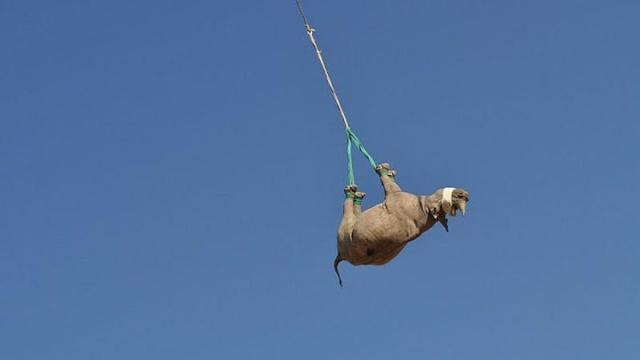With awards handed out for research into cat meows, germs on pavement gum, and the reason for human beards, the latest iteration of the Ig Nobel prizes is as ridiculous as usual.
It’s that awesome time of year again when we get to poke fun at and also celebrate the weirder side of science. The 2021 Ig Nobel prizes were awarded yesterday, and, as was the case last year, the ceremony had to be held online on account of covid-19. This was the 31st running of the contest, which is sponsored by the Annals of Improbable Research magazine.
Among the 10 winners is a team led by Olcay Cem Bulut from University Hospital Heidelberg in Germany. Their research showed that nasal breathing “improved significantly after sexual intercourse with climax,” comparable to taking decongestant drugs, and that the sinus-clearing effect lasted for over an hour. Sounds like a good study to have been a test subject in — stuffed up nasal passages are such a pain.
A team from the Max Planck Institute won an Ig Nobel for chemistry, in which they tested the air inside of movie theatres to see if odours produced by the audience can “reliably indicate the levels of violence, sex, antisocial behaviour, drug use, and bad language in the movie the audience is watching,” as summarized by the Annals of Improbable Research. Pavlo Blavatskyy from the University of Montpellier in France discovered — if that’s the right word — that obesity among post-Soviet politicians correlates positively to levels of corruption in their respective countries, earning him an Ig Nobel in economics.
The award for ecology went to Leila Satari and her colleagues from the University of Valencia. They studied the bacteria that lingers and grows on discarded chewing gum, as well as how the “wasted chewing gum bacteriome” changes over time, as the researchers wrote in their study, published in Scientific Reports. The team analysed chewing gum tossed onto pavements around the world, finding that multiple bacterial strains will emerge after just a few weeks and last for upwards of three months. “Our findings have implications for a wide range of disciplines, including forensics, contagious disease control, or bioremediation of wasted chewing gum residues,” the researchers wrote.
Studies on variations in “purring, chirping, chattering, trilling, tweedling, murmuring, meowing, moaning, squeaking, hissing, yowling, howling, growling, and other modes of cat–human communication” earned Lund University biologist Susanne Schötz the Ig Nobel prize for biology. Her work spans five papers written from 2011 to 2016 (here and here, for example), and includes observations of cats named Donna, Rocky, and Turbo. Among the many findings, the research shows that a murmur combined with a meow is the most common cat vocalisation and that cats will make different sounds depending on the context, such as when observing birds through a window or when meowing for food.
Human males evolved beards to protect against punches to the face, according to a paper co-authored by Ethan Beseris from the University of Utah. For this stunning hypothesis, the team was awarded the Ig Nobel peace prize. No humans were actually punched during the course of this study; instead, weights were dropped onto a bone-like fibre epoxy composite wrapped in sheepskin (with fleece still attached during certain tests). As the researchers wrote in their study:
[The] results of this study indicate that hair is indeed capable of significantly reducing the force of impact from a blunt strike and absorbing energy, thereby reducing the incidence of failure. If the same is true for human facial hair, then having a full beard may help protect vulnerable regions of the facial skeleton from damaging strikes, such as the jaw. Presumably, full beards also reduce injury, laceration, and contusion, to the skin and muscle of the face.
The Ig Nobel prize for transportation went to Cornell University’s Robin Radcliffe and his colleagues, which they earned by evaluating multiple methods for transporting endangered black rhinos. These rhinos are under threat from poachers, and they need to be relocated to prevent excessive inbreeding. An ideal way to transport sedated rhinos is by using a helicopter to lift them up by their feet, requiring them to hang upside down. Radcliffe and his team were worried that the rhinos might experience breathing and cardiovascular problems while inverted, so they studied 12 rhinos, both upright and upside down, to test the theory. Turns out it makes no difference, and that it’s totally cool to transport sedated, upside-down rhinos.
Alessandro Corbetta and colleagues from Eindhoven University of Technology won the prize in physics for conducting experiments to “to learn why pedestrians do not constantly collide with other pedestrians,” according to the Ig Nobel organisers. The award for entomology went to team of U.S. Navy researchers for investigating the best way to eradicate cockroaches on submarines. This study dates back to 1971, so it’s never too late to win an Ig Nobel.
Congratulations to all the “winners.” Be sure to check out the Ig Nobel prizes from 2020, 2019, and 2018.
